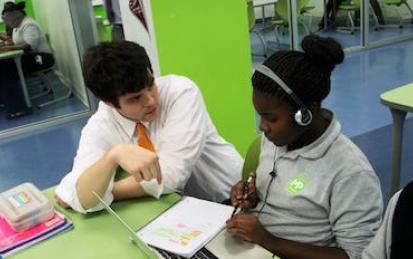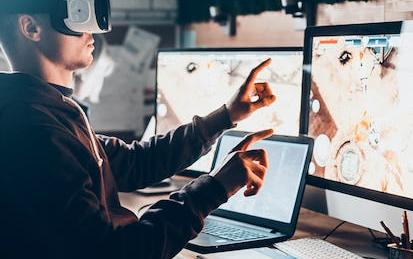

Our Courses
Interaction Design
You will learn how to design technologies that bring people joy, rather than frustration. You'll learn how to generate design ideas, techniques for quickly prototyping them, and how to use prototypes to get feedback from other stakeholders like your teammates, clients, and users. You'll also learn principles of visual design, perception, and cognition that inform effective interaction design.
-
Course by

-
 Self Paced
Self Paced
-
 English
English

Rapid Prototyping Using 3D Printing
This specialization will help you understand how prototyping can be accelerated by the use of 3D printing. It first provides insights into the core processes in engineering and product design & development to bring out the importance of prototyping. It then guides learners through different types and characteristics of prototypes, and the different ways of producing prototypes. Learners are then introduced to a wide array of 3D printing technologies and their capabilities to develop a skill in choosing optimal 3D printing tools for a given type of prototype.
-
Course by

-
 Self Paced
Self Paced
-
 English
English

Rapid Prototyping Materials and Tooling
Hello, everyone! Welcome to this course on Rapid Prototyping Materials and Tooling. This is part of the Rapid Prototyping and Tooling specialization. In this course, I’ll cover the characteristics and appropriate uses of a variety of prototyping materials, including cardboard, plastic, wood, and aluminum.
-
Course by

-
 Self Paced
Self Paced
-
 5 hours
5 hours
-
 English
English

Blended Learning: Personalizing Education for Students
Plenty of buzz exists about blended learning and its transformational potential. But what does blended learning really mean? In this course we will explore the different models of blended learning and dive into key issues that impact students, teachers, and schools. Specifically, we will look at these issues through the lens of three high-performing schools that each use a different type of blended learning.
-
Course by

-
 Self Paced
Self Paced
-
 9 hours
9 hours
-
 English
English

UX (User Experience) Capstone
In this UX capstone course, you’ll conduct a multi-stage user experience project to design a product from scratch.
-
Course by

-
 Self Paced
Self Paced
-
 19 hours
19 hours
-
 English
English

Introduction to User Experience Principles and Processes
This UX course provides an introduction to the fields of UX research and design. Learners will gain an understanding of what is involved in UX research, including conducting interviews, evaluating systems, and analyzing systems using principles of good design. Learners will also learn about the work involved in UX Design, including the generation of promising design solutions and the creation of prototypes at multiple levels of fidelity.
-
Course by

-
 Self Paced
Self Paced
-
 12 hours
12 hours
-
 English
English

Making Your First Virtual Reality Game
Virtual Reality is one of the most exciting experiences that technology can give us. The immersion and presence you can have in VR is quite unlike any other medium. Like many others, you are excited about the possibilities of this new medium and want to get started developing your own VR experiences. This course will take you through all of the steps you need to create a VR game or other project. This is the final course in our Specialisation: Virtual Reality. The previous courses teach you the skills you need to make a VR game.
-
Course by

-
 Self Paced
Self Paced
-
 27 hours
27 hours
-
 English
English
Human-Centered Design: an Introduction
In this course, you will learn how to design technologies that bring people joy, rather than frustration. You'll learn several techniques for rapidly prototyping (such as Wizard of Oz Prototyping) and evaluating multiple interface alternatives -- and why rapid prototyping and comparative evaluation are essential to excellent interaction design. You'll learn how to conduct fieldwork with people to help you get design ideas.
-
Course by

-
 Self Paced
Self Paced
-
 14 hours
14 hours
-
 English
English

Sensors and Sensor Circuit Design
This course can also be taken for academic credit as ECEA 5340, part of CU Boulder’s Master of Science in Electrical Engineering degree. After taking this course, you will be able to: ● Understand how to specify the proper thermal, flow, or rotary sensor for taking real-time process data.
-
Course by

-
 Self Paced
Self Paced
-
 32 hours
32 hours
-
 English
English

Pressure, Force, Motion, and Humidity Sensors
"Pressure, Force, Motion, and Humidity Sensors" can also be taken for academic credit as ECEA 5342, part of CU Boulder’s Master of Science in Electrical Engineering degree. This is our third course in our specialization on Embedding Sensor and Motors. To get the most out of this course, you should first take our first course entitled Sensors and Sensor Circuits. Our first course gives you a tutorial on how to use the hardware and software development kit we have chosen for the lab exercises.
-
Course by

-
 Self Paced
Self Paced
-
 24 hours
24 hours
-
 English
English



